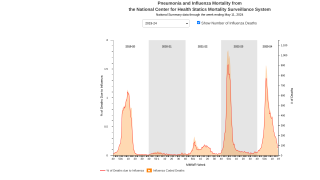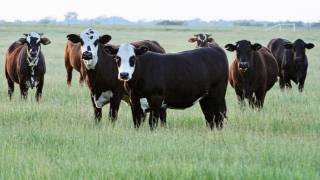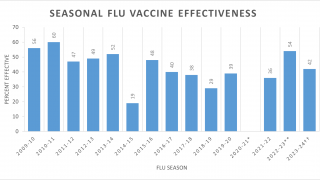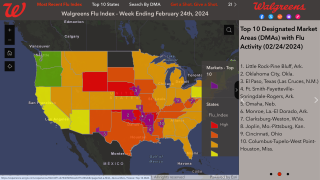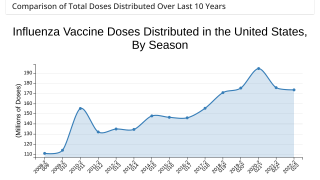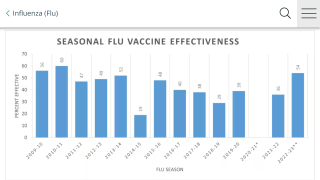About 50% of U.S. States Have Reported Avian Influenza Outbreaks

The recent announcement from the United States Department of Agriculture’s (USDA) Animal and Plant Health Inspection Service (APHIS) has confirmed the presence of highly pathogenic avian influenza (HPAI) continued expanding westward and is now impacting about half of U.S.
On March 30, 2022, the USDA added a non-commercial, mixed-species backyard flock (non-poultry) in Massachusetts; a non-commercial, mixed-species backyard flock (non-poultry) in Wyoming; a commercial poultry flock in North Carolina; a non-commercial backyard chicken flock (non-poultry) in Ohio; and a non-commercial, backyard chicken flock (poultry) in North Dakota.
The total number of U.S. states reporting HPAI in birds has reached twenty-three states, depopulating about 16 million birds.
And to the north, the Canadian Food Inspection Agency reported H5N1 outbreaks beginning in December 2021, which signaled the first HPAI identification in the Americas since June 2015.
Furthermore, the World Organisation for Animal Health confirmed on March 2, 2022, the presence of HPAI in a bald eagle that had died near Vancouver, British Columbia, Canada.
These confirmations serve as a potent reminder that avian influenza (AI) is spreading in wild bird populations in the U.S. as they migrate worldwide.
The USDA continues to remind anyone with poultry or other susceptible birds to practice good biosecurity habits to protect them from infectious AI.
From a recent food market impact perspective, the Iowa Department of Agriculture and Land Stewardship (IDALS) reported its tenth HPAI outbreak in 2022.
A recent confirmation was from a layer chicken farm with about 1.4 million birds in Guthrie County. And two outbreaks occurred at commercial turkey farms in Hamilton County, which had 28,000 birds, and in Buena Vista County.
AI viruses, such as the highly pathogenic H5N1 virus, can, on rare occasions, cause disease in humans. According to the U.S. CDC, transmission to humans occurs when people have had close contact with infected birds or heavily contaminated environments.
Due to the potential for human infection, it is recommended that people working with poultry suspected of being infected with AI or in contact with such poultry wear protective clothing, face masks, goggles, gloves, and boots.
However, as of March 31, 2022, the CDC says the HPAI risk to humans is ‘low.’ There have not been any human cases of AI viruses detected in the U.S.
Internationally, about 54 countries reported an H5N1 outbreak in birds in 2021 and 2022.
And since 2003, various countries reported more than 860 total human infections with HPAI A(H5N1) viruses to the World Health Organization, with about 53% of those resulting in a fatality.
While there is no evidence that anyone has gotten ‘bird flu’ after eating properly cooked poultry products, uncooked poultry and poultry products like blood could have been the source of a small number of human bird flu infections in Southeast Asia, says the CDC.
Available data on bird flu viruses spreading worldwide suggest that most bird flu virus infections would respond to treatment with flu antiviral medicines if treatment starts quickly after symptoms begin. However, some evidence shows flu antiviral drugs may not work as well against some A(H5N1) and A(H7N9) bird flu viruses.
And the annual ‘flu shot’ does not offer protection.
But should there become a human-to-human bird flu pandemic, the U.S. government does have a vaccine for one type of H5N1 bird flu virus in inventory and could distribute it needed.
The U.S. FDA has authorized Seqirus' AUDENZ (Influenza A(H5N1) monovalent vaccine for restricted use.
Additional avian influenza news is posted at PrecisionVaccinations.com/avian.
PrecisionVaccinations publishes fact-checked research-based news.
Note: This news article edited various content sources for clarity and was manually curated for mobile readers.
Our Trust Standards: Medical Advisory Committee
- USDA Confirms Highly Pathogenic Avian Influenza in Massachusetts, Wyoming, North Carolina, Ohio and North Dakota
- Influenza A viruses of high pathogenicity (Inf. with) (non-poultry including wild birds) (2017-), Canada
- Iowa Department of Agriculture and Land Stewardship and USDA APHIS Confirm Fourth Case of Highly Pathogenic Avian Influenza in B
- CDC: Update: H5N1 Bird Flu Poses Low Risk to the Public
- Avian Influenza (Bird Flu) News For 2022














